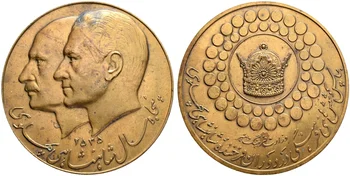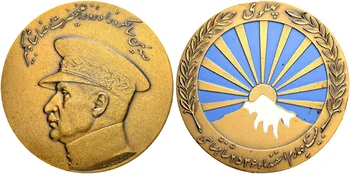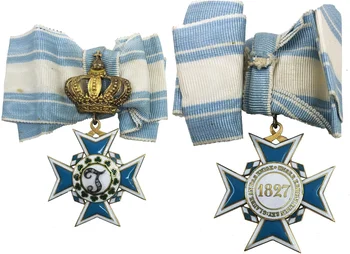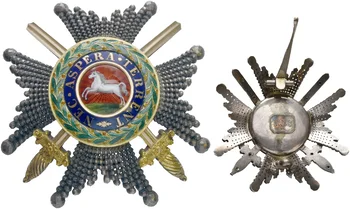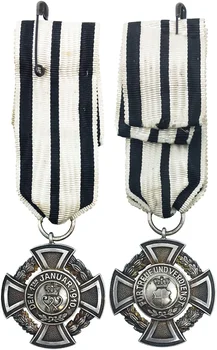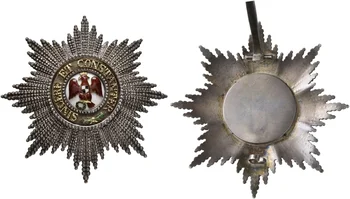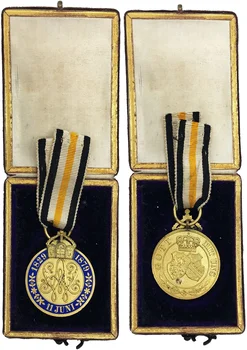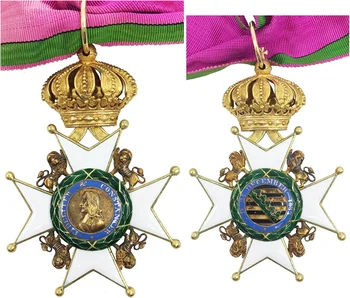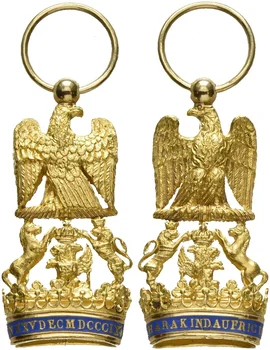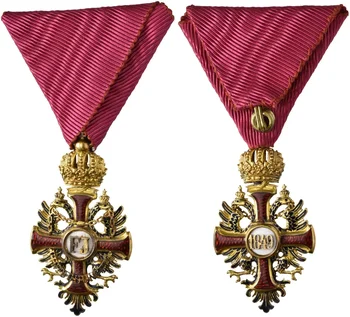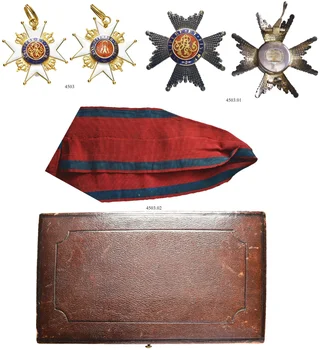 1
1 Order of Ernst August. 1st-model (with royal crowns and ducal hats between the cross arms), 2nd-edition (with „open“ crowns and ducal hats), 1st-class Commander set of insignia, manufacturing by Friedrich Carl Büsch in Hanover from 1866 until after 1868, consisting of: Commanders badge, 59.1 x 56.1 mm, gold, partly guilloché, and enamels, 32.3 g, with original old, not assembled but worn neck ribbon, and breast star, 70.9 x 68.6 mm, silver brillanté and repercé, centre gold, partly guilloché, and enamels, 64.4 g, on the reverse manufacturer’s indication, with pin, in its original, slightly rubbed case. OEK22 715, 716.
Ernst August-Orden. 1. Modell (mit königlichen Kronen und heraldischen Herzogshüten zwischen den Kreuzarmen), 2. Ausgabe (mit „ungefüllten“ Kronen und Herzogshüten), Komtur-Set 1. Klasse, Anfertigung der Firma Friedrich Carl Büsch in Hannover zwischen 1866 und 1868, bestehend aus: Komturkreuz, 59,1 x 56,1 mm, Gold, tlw. Guillochiert, emailliert, 32,3 g, mit originalem alten, nicht konfektionierten, jedoch getragenen Halsband, und Bruststern, 70,9 x 68,6 mm, Silber brillantiert und reperciert, Medaillon Gold, tlw. Guillochiert, emailliert, 64,4 g, auf dem Revers Herstellerangabe, an Nadel, im originalen, jedoch etwas beriebenen Verleihungsetui. OEK22 715, 716.
Sehr selten / Very rare. Fast vorzüglich / About extremely fine. (2)
(~€ 9’345/USD 10’990)
The five-class (Grand Cross, Commander 1st and 2nd class, Knight 1st and 2nd class, with annexed gold and silver cross for merit) Order for civil and military merit was instituted on December 15, 1865, by King George V of Hanover (1819-1878, reigned from 1851 until 1866), and named after his father King Ernest [Ernst] August of Hanover (1771-1851, reigned since 1837). After the order had been abolished by the Prussian Government in 1866 due to the Prussian annexation of the Kingdom of Hanover, King George V also in exile continued to confer this order in all classes, as well did his son and successor as head of the Royal House of Hanover, (Crown) Prince Ernst August of Hanover, 3rd Duke of Cumberland und Teviotdale und 3rd Earl of Armagh (1845-1923).
It is unknown when the change from filled to open crowns was effected. According to Klenau (in GK2 S. II-220) between 1866 and 1877 only 45 1st-class commander sets were conferred. According to Thies and Hapke (in TH page (46)), in this period 24 1st-class commander sets were conferred to Hanoverians, and 21 to foreigners.
Dieses Los steht nicht mehr zum Verkauf.
 1
1 
